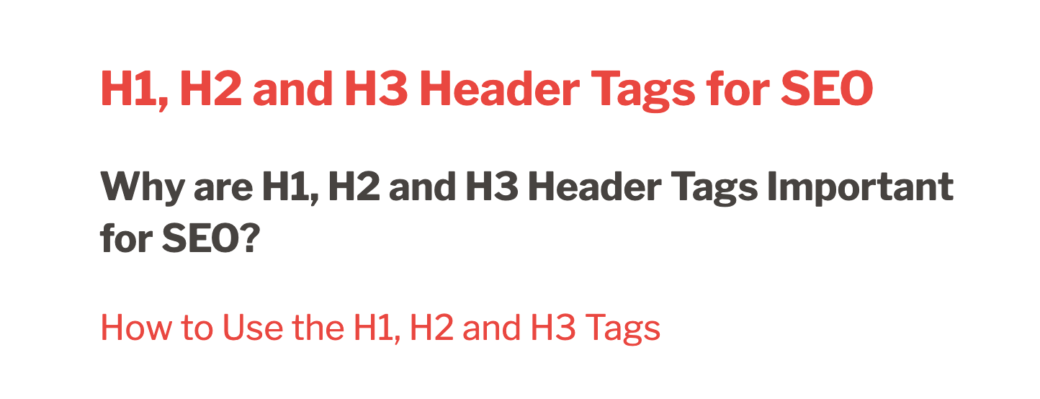Using Title Tags
Our first and second posts about the title tags topic received extreme attention, so we’re here to follow up. As technology and internet rules evolve every day, we’re answering the ever-so-popular question – does your content still need H1, H2, and H3 title tags in 2020?
Recap
Before we answer the question, let’s recap! Using and optimizing your business’ website with proper title tags, such as H1, H2, H3, etc., can increase your website’s rankings and its chances of ranking highly through a search engine, like Google. These title tags are important with the on-page SEO factor because it communicates vital information about your website to the search engines.
Title tags are short structural indicators to let your audience and search engines know about the contents of your website. It gives an order and direction of the content to look for on your website’s content and blog pages.
Title Tags Example

H1 (Bold Red Text)
This title tag explains what your webpage or blog post is about.
H2 (Bold Black Text)
The second-level heading gives more details about the topic.
H3 (Thin Red Text)
The third-level heading details information about the subtopic.
4 Best Practice Tips
Our answer is yes, you should still use title tags in 2019 for websites’ pages and posts’ content. Here are four best practice tips to help you implement this into your content:
Use Action Words
Incorporate action words into your content’s title tags and URL slug. These words express what you want your audience to do or how to respond after reading the content.
Use Numbers
Blog post titles, such as 4 Top Tips… and 3 Best Features…, gear to quick reads and help readers find and retain information quickly. These titles attract more clicks and readers. Try incorporating this best practice tip into your next blog post.
Check For Proper Length
The length for H1 title tags to stay under is 20-70 characters. There are many tools that you can use to make sure you don’t exceed this character limit, like the one below.
[callout ]SEO Title Tag Checker Resource: Google SERP Snippet Optimization Tool [/callout]
Write for Searchers (i.e. Your Audience), Not Just Search Engines
Ready to Increase Your Website’s Visibility?
TM specializes in search engine optimization (SEO) as one of our services. This service includes guiding you on how to optimize and use title tags in your website’s content. Would you like a consultation on how we can do this for your website? Contact us today to get started.
It’s critical to not over-optimizing your website as well. Over-optimizing includes using the same keyword too many times, speaking in short, incomplete sentences, and link spamming. To combat this, write tags your audience will search for or will want to read. Over-optimizing your website confuses search engines and also your audience, content quality is a major consideration for Google. Write content that people want to read! Yoast SEO is a great tool at informing you when your website is overly optimized and when to tone it down. If you are thinking to expand further into search engine optimization, then read our article on SEO best practices or performing an SEO audit in 2020.
Photo Credits:
Featured Image: Fikret tozak on Unsplash


